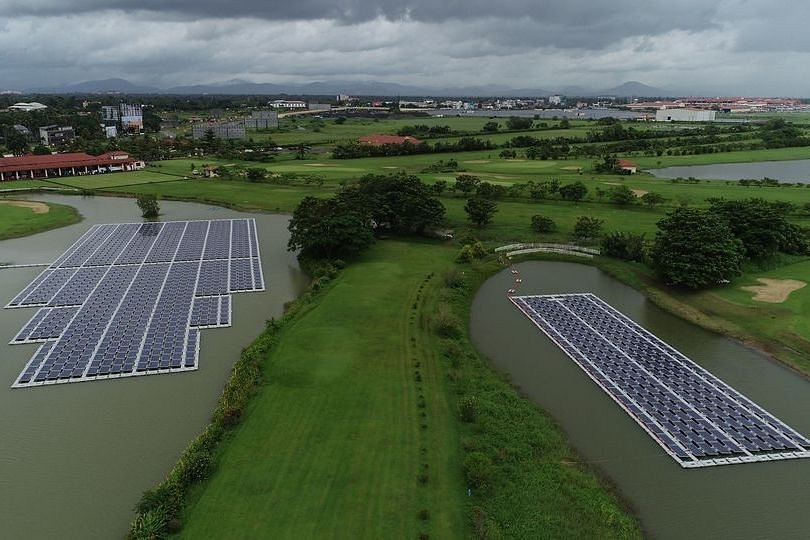News Brief
Cochin Airport Launches Floating Solar Power Plant: Here’s What Makes The Technology Unique
- The floating solar plant technology is scalable and compatible with a wide range of equipment, and provides ease of installation and decommissioning.

The floating solar plant at Cochin airport.
Yesterday (21 January), the Cochin International Airport Limited (CIAL) began commercial operations of its floating solar energy plant that can produce 452 KWh of electricity.
This takes the total electricity produced by solar power plants installed by CIAL, world’s first complete solar-powered airport, to 40 MWp.
The floating plant, connected to the Kerala State Electricity Board grid, has been set up on 12 lakes that have come up on the golf course CIAL has set up near the airport. The lake itself is using treated water from the sewage treatment plant of the airport.
Water from the lakes is used for maintaining and watering the golf course, making CIAL an organisation that has total sustainable management at the airport.
Installation of floating power plants are at least two to three times pricier than traditional ground-mounted solar plants but CIAL has used a unique French technology from North France-based Ciel Terre firm.
Thanks to the French technology, the costs are at par with ground-mounted solar plants, CIAL said in its Facebook page.
CIAL has gone in for solar panels that have high-density polyethylene (HDPE) surfaces that are linked with each other. About 1,300 such panels have been put up in the lakes at a cost of Rs 2 crore.
The floating plants are claimed to be more efficient than ground-mounted ones, according to V J Cherian, CIAL founder managing director.
According to Ciel Terre, a pioneer of floating solar plants, its offerings combine the simplicity of construction and maintenance, design flexibility, ecological safety and a durability proven by numerous tests.
Its floating solar plant technology is scalable and compatible with a wide range of equipment and can be adapted to most types of reservoirs, dedicated for irrigation, water retention or treatment, hydroelectricity.
Such floating solar plants have already come up in the US, France, Japan, Germany, Chile, Brazil, China, and Cambodia.
Floating solar panels are built on pontoons or mounting devices that are engineered with precision.
HDPE is used to make that pontoons which support the solar panels over the water bodies such as lakes, as its density is lower than water. It can also be recycled.
The pontoons are manufactured with the process including imbibing ultra-violet rays absorber to prevent them from degradation and discoloration.
Having solar plants on water also improves the panels' efficiency to producer power by 10 per cent as the water bodies help to keep them cool.
The World Bank has said that floating solar power plants can help increase solar power generation especially in countries that have high density of population and reduced availability of land.
Kerala is a typical example of land not being available and density of population being high.
In addition, the floating plants provide the convenience of ease of installation and decommissioning.
Support Swarajya's 50 Ground Reports Project & Sponsor A Story
Every general election Swarajya does a 50 ground reports project.
Aimed only at serious readers and those who appreciate the nuances of political undercurrents, the project provides a sense of India's electoral landscape. As you know, these reports are produced after considerable investment of travel, time and effort on the ground.
This time too we've kicked off the project in style and have covered over 30 constituencies already. If you're someone who appreciates such work and have enjoyed our coverage please consider sponsoring a ground report for just Rs 2999 to Rs 19,999 - it goes a long way in helping us produce more quality reportage.
You can also back this project by becoming a subscriber for as little as Rs 999 - so do click on this links and choose a plan that suits you and back us.
Click below to contribute.
Latest